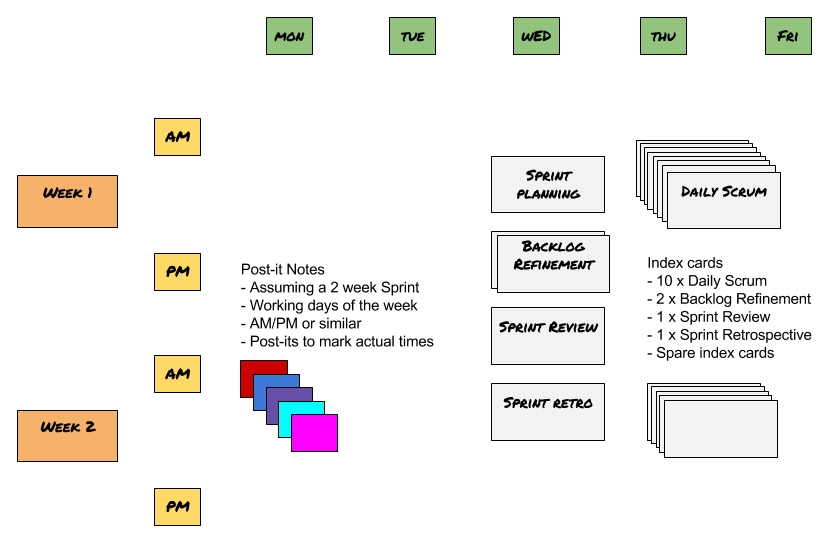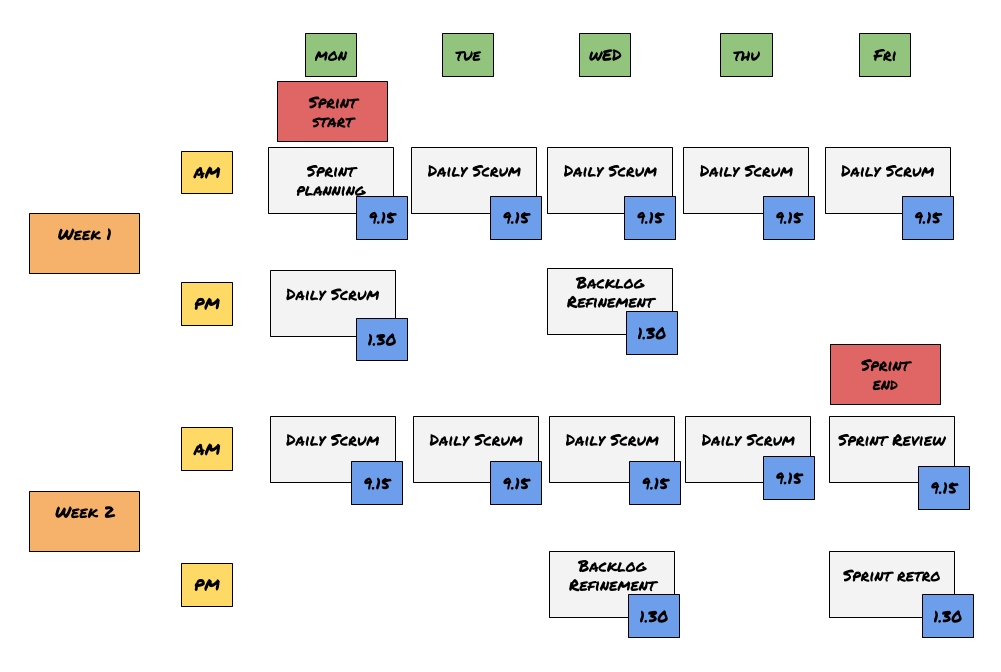The final step is to work as a team to establish our Sprint calendar. Forming a consensus amongst the group about the days/times that we meet will help ensure everyone can attend and we don't miss out on anyone's contribution.
What we'll need: Index cards, post-it notes (regular and large), black Sharpie pens
Setup: A large table that the whole team can fit comfortably around
Remember: Set a time box before we start (20 minutes should be sufficient)
Lay out the table as per the following diagram:

Writing the meetings on index cards means that we're easily able to shuffle them around should we change our mind:

Start the timer, and then ask our team to layout their Sprint calendar using the preceding guide as an example.
Explain that it will be easier to first determine the Sprint start and end dates then set up all meetings. For example, Sprint Planning happens on the first day of the Sprint. Sprint Review and Retrospective are on the last day of the Sprint. The DAILY SCRUM should be every day, at a time agreed on by the team, except when it clashes with the Sprint Planning or Sprint Review or Sprint Retro meetings.
In the example, on the first day of the Sprint, our team has chosen to hold the Daily Scrum at 1.30 p.m., after Sprint Planning. Sometimes teams hold their Daily Scrum directly after Sprint Planning; sometimes they don't feel it's necessary. We should use our discretion.
The same thinking applies to the last day of the Sprint; for example, if we decide to hold both the Sprint Review and Sprint Retrospective events in the afternoon, perhaps we should have a Daily Scrum to coordinate our work in the morning.
Annotate the index cards with post-it notes showing the times as in the preceding example.
Once the team has reached agreement, schedule all meetings at given time slots for the foreseeable future. Cadence is an essential part of Scrum. Establishing a rhythm is key to the success of the incremental delivery approach. The regular iteration cycles give the team a heartbeat by which it operates.
